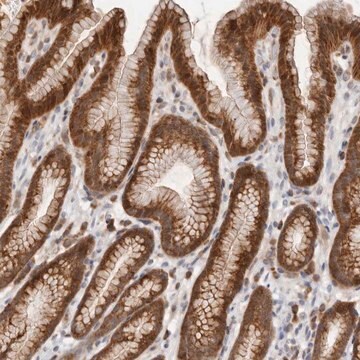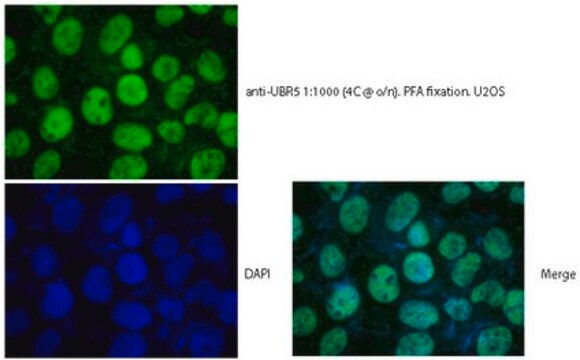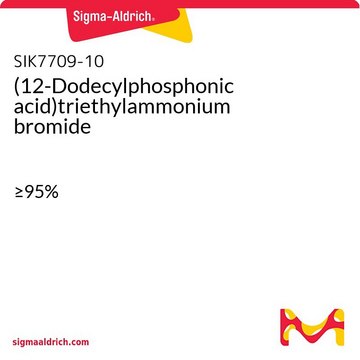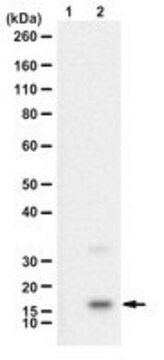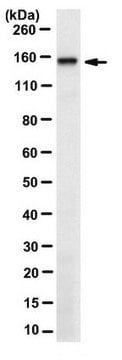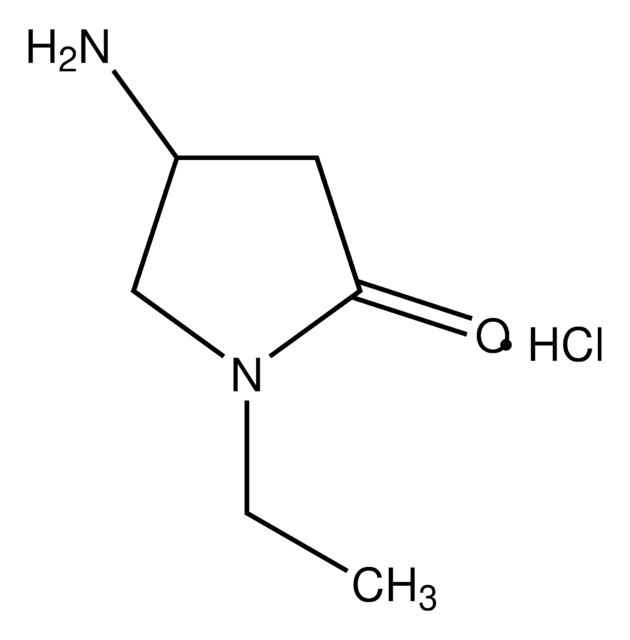ABC1391
Anti-Ring Finger Protein 213 (RNF213)
from rabbit
Sinónimos:
E3 ubiquitin-protein ligase RNF213, ALK lymphoma oligomerization partner on chromosome 17, Mysterin, RING finger protein 213, RING-type E3 ubiquitin transferase RNF213
About This Item
Productos recomendados
origen biológico
rabbit
forma del anticuerpo
purified antibody
tipo de anticuerpo
primary antibodies
clon
polyclonal
reactividad de especies
human, mouse
envase
antibody small pack of 25 μg
técnicas
immunocytochemistry: suitable
immunoprecipitation (IP): suitable
western blot: suitable
isotipo
IgG
Nº de acceso NCBI
Nº de acceso UniProt
Condiciones de envío
ambient
modificación del objetivo postraduccional
unmodified
Información sobre el gen
human ... RNF213(57674)
Descripción general
Especificidad
Inmunógeno
Aplicación
Western Blotting Analysis: A 1:2,000 dilution from a representative lot detected Ring Finger Protein 213 (RNF213) in HUVEC transfected with siRNA213 (Courtesy of Dr Akio Koizumi at Kyoto University).
Immunocytochemistry Analysis: A representative lot detected Ring Finger Protein 213 (RNF213) in HeLa cells treated with RNF213 siRNA (Hitomi, T., et. al. (2013). Biochem Biophys Res Commun. 438(1):13-9).
Western Blotting Analysis: A representative lot detected Ring Finger Protein 213 (RNF213) in Western Blotting applications (Hitomi, T., et. al. (2013). Biochem Biophys Res Commun. 438(1):13-9; Banh, R.S., et. al. (2016). Nat Cell Biol. 18(7):803-13; Kobayashi, H., et. al. (2015). J Am Heart Assoc. 4(7)).
Calidad
Western Blotting Analysis: 1 µg/mL of this antibody detected Ring Finger Protein 213 (RNF213) in HEK293T cells transfected with 3XFlag RNF213 wild-type.
Descripción de destino
Forma física
Otras notas
¿No encuentra el producto adecuado?
Pruebe nuestro Herramienta de selección de productos.
Código de clase de almacenamiento
12 - Non Combustible Liquids
Clase de riesgo para el agua (WGK)
WGK 2
Punto de inflamabilidad (°F)
does not flash
Punto de inflamabilidad (°C)
does not flash
Certificados de análisis (COA)
Busque Certificados de análisis (COA) introduciendo el número de lote del producto. Los números de lote se encuentran en la etiqueta del producto después de las palabras «Lot» o «Batch»
¿Ya tiene este producto?
Encuentre la documentación para los productos que ha comprado recientemente en la Biblioteca de documentos.
Nuestro equipo de científicos tiene experiencia en todas las áreas de investigación: Ciencias de la vida, Ciencia de los materiales, Síntesis química, Cromatografía, Analítica y muchas otras.
Póngase en contacto con el Servicio técnico
